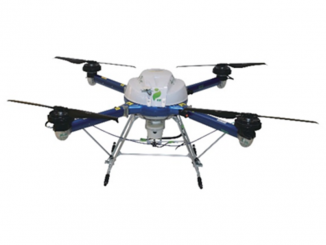By Sasa Spasic, CEO • SENIS AG
Modern magnetic position and angle sensors consist of a combination of a permanent magnet and a magnetic field sensor. Billions of such sensors are built in automotive, industrial and consumer products each year. The characteristics of permanent magnets for such sensors must be carefully controlled. The control of the magnets often includes measurement of the magnetic field over an area or volume of interest near the magnet, which is usually performed by a Magnetic Field Mapper. The magnets of interest might be as small as a few millimeters in diameter and are getting even smaller. Therefore, the magnetic fields to be measured are increasingly inhomogeneous. This trend imposes a number of difficult requirements for a good Magnetic Field Mapper, including good mechanics for accurate mutual positioning of the magnet under test and the magnetic field probe, measurement of all three components of a magnetic field at the same spot, high resolution and overall accuracy of the magnetic field measurement, and high conformity of the sensitivity vectors of the probe to the coordinate system of the mapper.
 SENIS has brought to the market the first Magnetic Field Mapper, type MMS-1A-RS, which meets all these requirements (Figure 1).
SENIS has brought to the market the first Magnetic Field Mapper, type MMS-1A-RS, which meets all these requirements (Figure 1).
Application Field
The SENIS Magnetic Field Mapper MMS-1A-RS can be efficiently applied for:
- Accurate DC and AC magnetic field measurement of all three components of magnetic field at precisely defined points around an object sized from about 1 mm to 50 cm. Magnetic field measurement range is 100 μT to 3 T.
- Quality assessment tool (pass/fail analysis) in production lines for permanent magnets used for sensors in automotive industry, consumer electronics industry, energy monitoring and others
- Testing tool for the development of magnet systems in research laboratories
- Magnetic field mapping around small simple magnets or multi-pole magnets
- Magnetic field mapping of electronic circuit PCBs (such as those of smart-phones, tablets, etc.). This application area is related to potential safety hazards caused by the stray magnetic field of magnets.
- Magnetic field peak and zero value detection of magnetic encoders or code-plates as well as magnetic poles counting
- Magnetic field homogeneity in magnetic angle measurement
- Statistical analysis of measured data, including import/export of measured data and generating images and reports
- Dimensional measurement of objects under test, much like by a simple Coordinate Measuring Machine (CMM)
- Cracks and inhomogeneity detection in magnetic materials and in non-magnetized parts
Fully Integrated Three-Axis Hall Probe for Magnetic Field Measurement
The key component of a good magnetic field mapper is an adequate magnetic field sensor. The most suitable magnetic sensors for the purpose are sensors based on the Hall-effect.
The Mapper MMS-1A-RS incorporates a SENIS three-axis Hall-probe, which consists of a single silicon chip with monolithically integrated Hall elements for all three components of a magnetic field and signal conditioning electronics. The spatial resolution of this Hall probe is less than 100 µm. This allows simultaneous measurement of all three components of a highly non-homogeneous magnetic field in nearly single point.
The Hall probe geometry allows measuring of the magnetic field vectors at a distance of 0.15 mm from a magnet surface. The probe package is adapted to the testing of small magnets: the whole probe, with the package, can enter into a hole with a diameter of 2 mm.
A customized data acquisition and digital processing system triggers the magnetic field measurement at desired locations, converts the analog signals of the Hall probe into digital numbers, combines these numbers with the appropriate position coordinates, and provides the consolidated function Magnetic Field Vector of Probe Coordinates. A direct synchronization (position vs. measured magnetic field) between the Motion Control and the Data Acquisition Card (DAQ) is provided through the on-board real-time system integration bus. The acquisition of the measured data is performed with up to 50,000 samples/sec. Digital filters are applied to insure an optimal bandwidth and measured data averaging. Averaging period, number of samples, corner frequency, filter order and type are customizable.
The achieved accuracy of the magnetic measurement is 0.01 percent at normal room conditions.
Mechanics for Probe Positioning
The characteristics of the mechanics of the SENIS mapper MMS-1A-RS are similar to that of a contemporary low cost coordinate measuring machine (CMM). The MMS-1A-RS integrates a well calibrated Mechanical Probe Positioning System and Cartesian Moving Platform (CMP) for automatic positioning of the Hall probe at desired locations around the customer’s magnet assembly that needs to be measured. The CMP consists of three linear modules driven by step motors and are controlled through high-resolution linear encoders.

Touch-Trigger Sensor for CMM Functionality
The MMS-1A-RS integrates a 3D touch-trigger sensor with a ruby stylus that transforms the Magnetic Field Mapper into a simple Coordinate Measuring Machine (CMM).
For dimensional measurement of an object under test, the touch-stylus is mounted on the touch-trigger sensor (Figure 2). When an object is touched by the stylus, the coordinates of the touched point will be stored. By touching the next point on the object, the coordinates of the second touched point will be stored and the distance between the coordinates of these two points will be calculated.
The integrated functions of a magnetic field mapper and a coordinate measuring machine is a unique feature among all currently known instruments for characterization of magnets. This feature allows a user to precisely align a map of magnetic field with the geometry of the magnet under test, which is very important to do during development of products incorporating magnets and in quality control of such systems.
During the magnetic field mapping, the touch-trigger sensor is used to prevent probe damage. As soon as the Hall probe touches an object, the touch-trigger sensor will react and the probe movement will be stopped.
Novel Calibration Tools and Algorithms
In order to enable and maintain an extraordinary overall high-accuracy of the magnetic field mapping, several novel calibration algorithms are implemented in the MMS-1A-RS, including the following:
- Calibration of orthogonality of the linear axes of the Cartesian Moving Platform and planarity of the mapper table and rotary stage
- Locating the center of the Magnetic Field Sensitive Spot of the probe with an accuracy better than 5µm.
- Calibration of probe sensitivity tensor. This feature enables a user to check and/or recalibrate the three-axis Hall probe in-situ, without removing the probe from the mapper. The calibration includes the measurement of magnitudes and signs of all three components of each of the three sensitivity vectors of the three-axis Hall probe (that are treated as a second-order sensitivity tensor, or a 3×3 matrix). The accuracy of the sensitivity magnitude is ±0.1 percent or 50 µT. Moreover, the embedded calibration software allows a precise angular alignment of the three effective sensitivity vectors with the Cartesian coordinate system of the mapper to within ±0.1°. Such an alignment is crucially important in high-accuracy mapping of magnetic field vectors.
- Locating the axis of the rotation stage by a novel algorithm. The crossing of the rotation axis and the plane of the mapper table may be used as the origin of the coordinate system of the mapper.
- Calibration of the probe vertical position utilizing the touch sensor
- Zeroing the probe offset
- Monitoring and characterization of external magnetic fields and noise.
Summary and Benefits
Accurate mapping of the magnetic field around permanent magnets requires both accurate positioning of a magnetic field probe with respect to the magnet coordinate system and accurate measurement of the magnetic field vector with high spatial resolution. These requirements are met by combining in a single machine the features of a magnetic mapper and a coordinate measuring machine.
 SENIS Magnetic Field Mapper allows users to perform a fast, high resolution mapping of magnetic flux density around electromagnets or permanent magnets. The mapper software is fully parameterized, all measurement algorithms and scanning paths are customizable. MMS-1A-RS Magnetic Field Mapper allows measurements and 2D and 3D visualization of all three components of the magnetic field, magnetic angle, angle error, homogeneity, magnetic pole width for rotors, peak amplitude, etc. (Figure 3).
SENIS Magnetic Field Mapper allows users to perform a fast, high resolution mapping of magnetic flux density around electromagnets or permanent magnets. The mapper software is fully parameterized, all measurement algorithms and scanning paths are customizable. MMS-1A-RS Magnetic Field Mapper allows measurements and 2D and 3D visualization of all three components of the magnetic field, magnetic angle, angle error, homogeneity, magnetic pole width for rotors, peak amplitude, etc. (Figure 3).
Due to its wide application range, Magnetic Field Mapper MMS-1A-RS has already found large interests among companies in automotive industries, research and development institutes, service providers for magnetizing and test of permanent magnets and other industries.
The SENIS Magnetic Field Mapper is well equipped to face the coming tasks required for the inspection of magnets and electromagnets. The MMS-1A-RS mapper already integrates a Defectoscope with eddy current probe for crack and inhomogeneity detection in the magnetized and non-magnetized materials. Further examples of integrated probes are the magnet probes for reed-switches, sliding probes for in-contact measurements, magnetic cameras and probe arrays for surface scanning and others.
 About the Author
About the Author
Sasa Spasic is the CEO of SENIS AG in Zug, Switzerland since 2012. He holds a Master degree in Electrical Engineering from the University of Nis, Serbia. Prior to joining SENIS he worked in the energy management and software development business areas as technology development and professional service manager.
For more information visit www.senis.ch.



